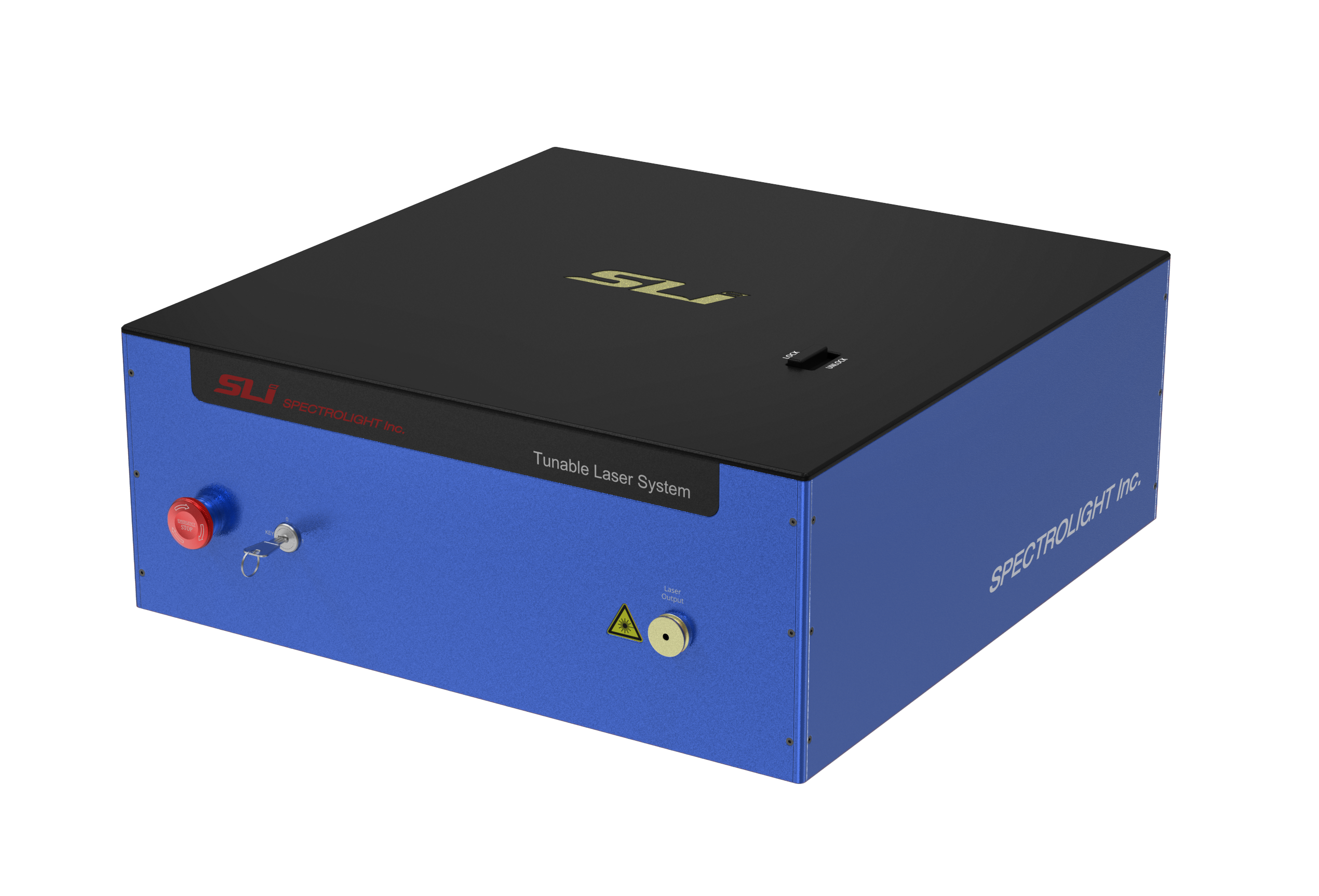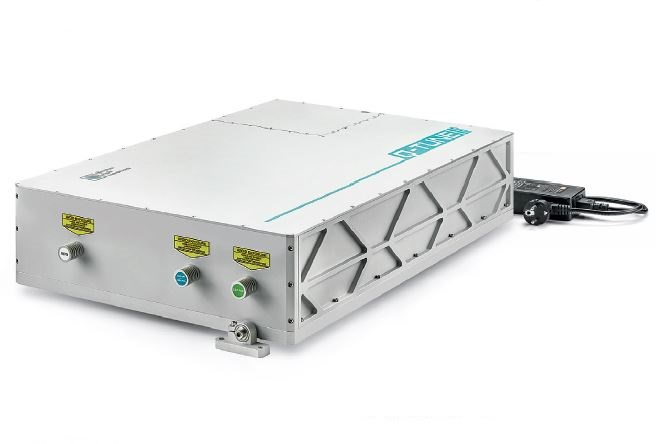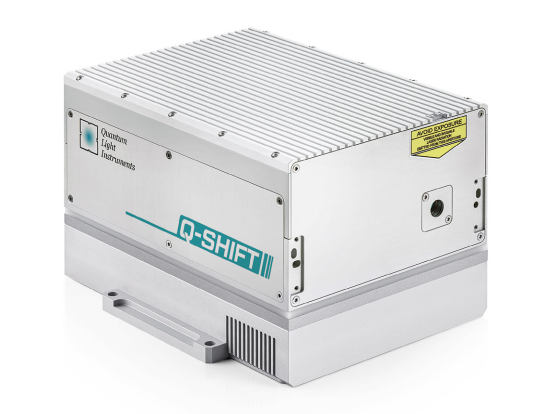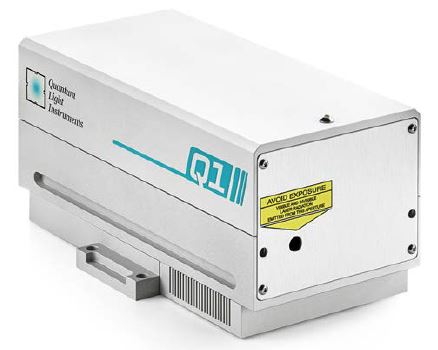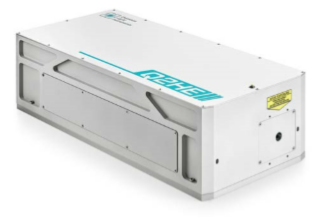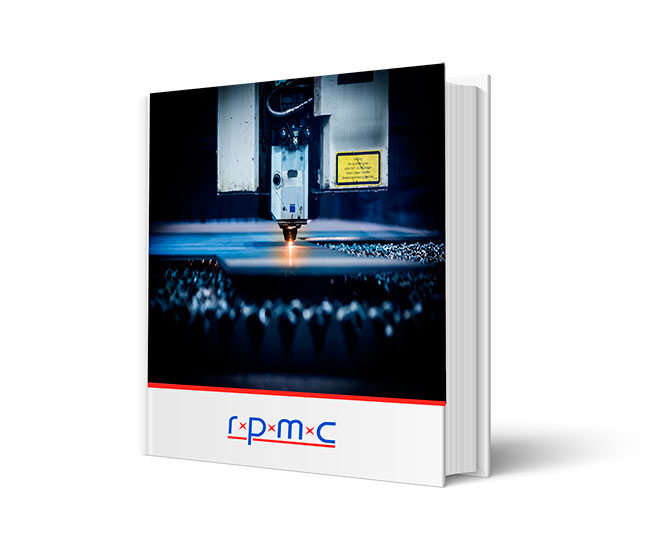TLS-Blue
Broadband Tunable Picosecond Pulsed Laser, 410-1700 nm
Key Features:
- Choose tunable CWL range from 410 to 1700 nm
- Custom tunable range available
- Uniform output wavelength
- Industry’s highest output power & rep. rates
- High precision & output for demanding applications
- Plug & Play: No adjustments or alignments!
- Easy scope integration: 1 output – multi-wavelength
- Adjustable power & CWL for application flexibility
- Choose a fixed bandwidth FWHM 10 or 20 nm
There are many configurations and options available. If you do not see exactly what you need below, please contact us!
Need Quantities? Have a question?
POPULAR CONFIGURATIONS:
Picture |
Part Number |
Part Description |
Datasheet |
Price |
Lead Time |
|
|---|---|---|---|---|---|---|
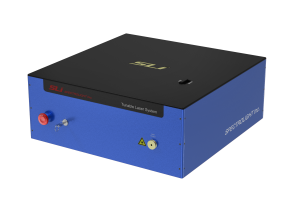
|
TSLF70-BLUE-SWIR |
Supercontinuum laser, tunable CWL 1140 – 1700 nm, FWHM: 10 or 20 nm (nominal), 7 W total avg. power (2 W – VIS), <50 ps pulse width (~6 ps fundamental), 80 MHz rep rate |
Inquire |
Get Quote | ||

|
TSLF70-BLUE-IR |
Supercontinuum laser, tunable CWL 775 – 1150 nm, FWHM: 10 or 20 nm (nominal), 7 W total avg. power (2 W – VIS), <50 ps pulse width (~6 ps fundamental), 80 MHz rep rate |
Inquire |
Get Quote | ||

|
TSLF70-BLUE-VIS |
Supercontinuum laser, tunable CWL 410 – 790 nm, FWHM: 10 or 20 nm (nominal), 7 W total avg. power (2 W – VIS), <50 ps pulse width (~6 ps fundamental), 80 MHz rep rate |
Inquire |
Get Quote | ||

|
TSLV80-BLUE-SWIR |
Supercontinuum laser, tunable CWL 1140 – 1700 nm, FWHM: 10 or 20 nm (nominal), 8 W total avg. power (1 W – VIS), <300 ps pulse width (~100 ps fundamental), 10 kHz to 200 MHz rep rate (adjustable) |
Inquire |
Get Quote | ||

|
TSLV80-BLUE-IR |
Supercontinuum laser, tunable CWL 775 – 1150 nm, FWHM: 10 or 20 nm (nominal), 8 W total avg. power (1 W – VIS), <300 ps pulse width (~100 ps fundamental), 10 kHz to 200 MHz rep rate (adjustable) |
Inquire |
Get Quote | ||

|
TSLV80-BLUE-VIS |
Supercontinuum laser, tunable CWL 430 – 790 nm, FWHM: 10 or 20 nm (nominal), 8 W total avg. power (1 W – VIS), <300 ps pulse width (~100 ps fundamental), 10 kHz to 200 MHz rep rate (adjustable) |
Inquire |
Get Quote | ||

|
TSLF15-BLUE-SWIR |
Supercontinuum laser, tunable CWL 1140 – 1700 nm, FWHM: 10 or 20 nm (nominal), 1.5 W total avg. power (500 mW – VIS), <50 ps pulse width (~6 ps fundamental), 20 MHz rep rate |
Inquire |
Get Quote | ||

|
TSLF15-BLUE-IR |
Supercontinuum laser, tunable CWL 775 – 1150 nm, FWHM: 10 or 20 nm (nominal), 1.5 W total avg. power (500 mW – VIS), <50 ps pulse width (~6 ps fundamental), 20 MHz rep rate |
Inquire |
Get Quote | ||

|
TSLF15-BLUE-VIS |
Supercontinuum laser, tunable CWL 410 – 790 nm, FWHM: 10 or 20 nm (nominal), 1.5 W total avg. power (500 mW – VIS), <50 ps pulse width (~6 ps fundamental), 20 MHz rep rate |
Inquire |
Get Quote | ||

|
TSLF10-BLUE-SWIR |
Supercontinuum laser, tunable CWL 1140 – 1700 nm, FWHM: 10 or 20 nm (nominal), 1 W total avg. power (100 mW – VIS), <300 ps pulse width (~100 ps fundamental), 5 MHz rep rate |
Inquire |
Get Quote | ||

|
TSLF10-BLUE-IR |
Supercontinuum laser, tunable CWL 775 – 1150 nm, FWHM: 10 or 20 nm (nominal), 1 W total avg. power (100 mW – VIS), <300 ps pulse width (~100 ps fundamental), 5 MHz rep rate |
Inquire |
Get Quote | ||

|
TSLF10-BLUE-VIS |
Supercontinuum laser, tunable CWL 450-790 nm, FWHM: 10 or 20 nm (nominal), 1 W total avg. power (100 mW – VIS), <300 ps pulse width (~100 ps fundamental), 5 MHz rep rate |
Inquire |
Get Quote |
The TLS series is the broadest continuously optically tunable broadband picosecond laser combining a supercontinuum laser & tunable bandpass filter. Users can tune output power, wavelengths from 410-1700nm by choosing the VIS, IR, SWIR, or a custom configuration, and real-time bandwidth control for TLS-Red (10 or 20nm fixed for TLS-Blue). These picosecond tunable lasers are suitable for various fields that require precision scanning and high output from fluorescence microscopy to time-resolved spectroscopy, such as TCSPC, Hyperspectral imaging, Machine vision, Semiconductors, Sensors, and other applications.
TLS-Blue & TLS-Red Benefits:
- Highly Tunable: The world’s FIRST wide continuous tunable wavelength range + simultaneous tunability of wavelength and real-time bandwidth control (TLS-Blue has a selectable fixed bandwidth)
- Uniform Wavelength Distribution: Patented filter technology provides uniform wavelength distribution within the output laser beam
- Cost-effective tunability: choose the wavelength range that is important to you, saving money on those you don’t need
- Models Grouped by Output Power: The TLS series is the only supercontinuum laser family to be categorized by output power, making it even easier to select an applicable configuration for you application
- Industry’s Highest Output Power: The TLS series overpowers the competition with a maximum output power of >4 mW/nm (TSLF70) and an average output power of >2.5 mW/nm
- Industry’s Highest Repetition Rates: Choose a fixed repetition rate at 5, 10, 20, 40, or 80 MHz, or variable rep. rate from 10 kHz to 200 MHz, depending on configuration
- Precision Scanning & High Output: Get the highest-quality, precision scanning & high output for various applications like hyperspectral imaging, spectroscopy & more
- Easy to Setup: Plug & Play system requires no alignments or adjustments allowing instant application.
- Easy Integration: Now, aligning multiple wavelengths to your application is a breeze, with full wavelength tunability from a single output
- Application Flexibility: With the ability to adjust power, wavelength, and real-time bandwidth control, the TLS can adapt to many different needs
- Replace Old Technology: While older, simpler lamp-based light sources are relatively cheap, the advanced precision, collimation, and coherence of tunable laser-based light sources can help tackle modern applications with excellent results
- Customizable: Select the source supercontinuum laser and your desired tunable wavelength range to get exactly what you need
If you have any questions or need more information, please contact us.

 SHIPS TODAY
SHIPS TODAY 